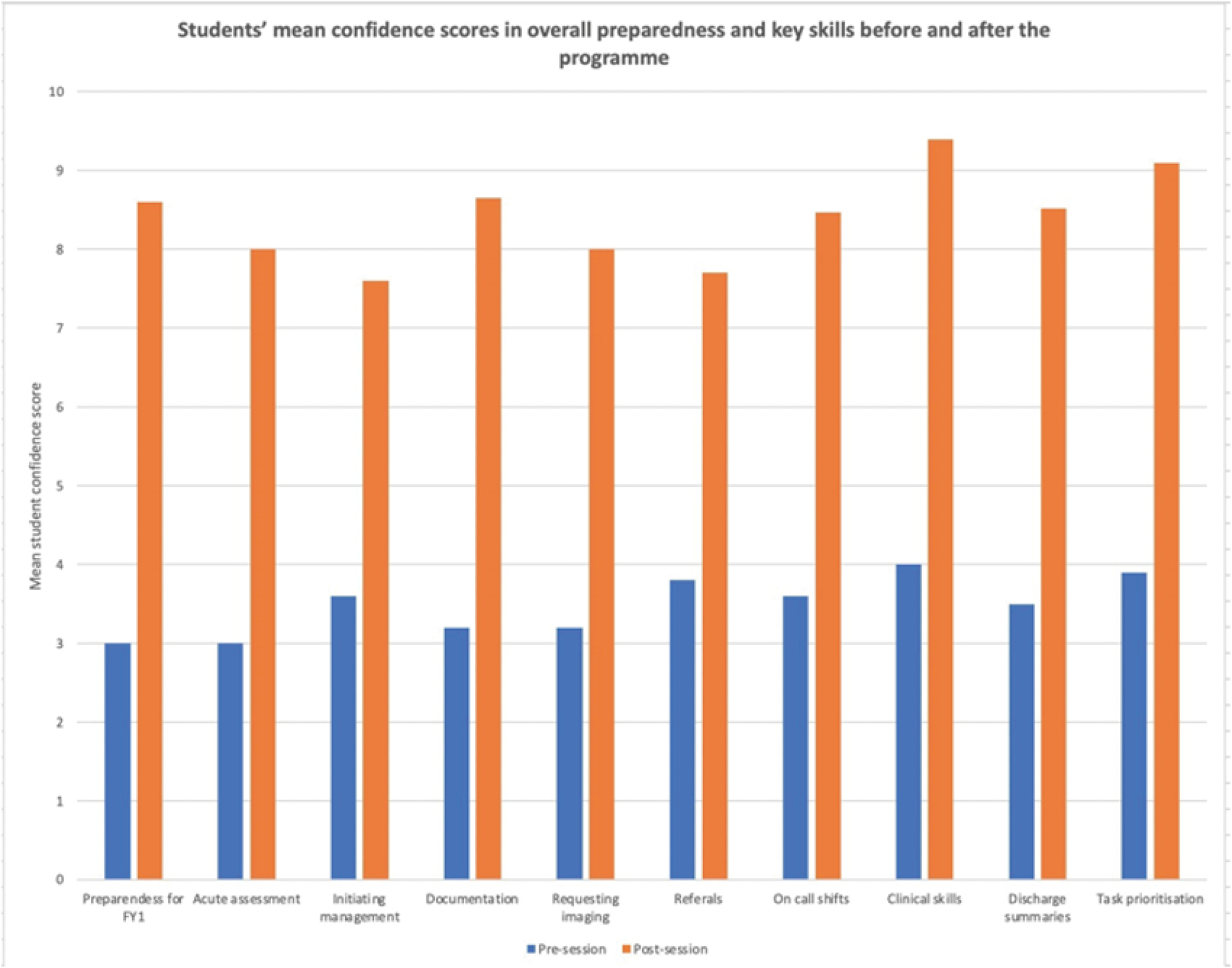
Many medical students feel unprepared for starting as FY1 doctors, and often report low confidence in taking responsibility for patients and working independently, and lack self-assurance in common FY1 skills, including assessing unwell patients and initiating management, task prioritization, referrals, documentation, ordering imaging and on-call shifts. These skills are developed during clinical placements; however, access to these opportunities during placements has diminished due to COVID-19 and concerns around patient safety. Simulation‐based teaching allows students to take responsibility and work within complex clinical environments without posing a risk to patients [1]. Previous studies have shown that simulated ward rounds improve students’ clinical skills [2]. This study aimed to evaluate whether a new simulated mock ward round with tasks would improve final-year students’ general preparedness for FY1 and confidence across common FY1 tasks.
The aim of the study was to evaluate whether simulated mock ward rounds increase final-year medical students’ overall confidence and feeling of preparedness for starting as FY1 doctors.
In total, 20 final-year medical students took part in the programme in two whole-day sessions. This was comprised of a simulated ward round of 10 patients. Students acted as FY1 doctors on the ward and carried out jobs, reviewed patients who deteriorated and had a number of tasks such as updating families, ordering radiology, initiating management and discharge summaries. Students’ confidence and preparedness was measured using pre- and post-course questionnaires. The questionnaires consisted of a 10‐point Likert scale for students to rate their confidence in key skills and overall preparedness for FY1 (1 = not at all confident, 10 = completely confident). These scores were matched and analysed using the Wilcoxon signed‐rank test. Additionally, there was blank spaces for feedback on the course which were analysed thematically.
Pre- and post-course questionnaires demonstrated that students felt significantly more prepared for FY1 after the course (p < 0.001). There was also a significant improvement in nine other domains deemed important for FY1 that students had reported low confidence in (see Figure 1). Qualitative data revealed that students appreciated the programme. They stated its superiority to other educational methods such as shadowing or didactic teaching sessions.


Simulated mock ward rounds can be used as an adjunct to clinical placements to increase medical students’ confidence about starting work, and to teach them valuable skills regularly utilized by FY1 doctors.
1.
2.